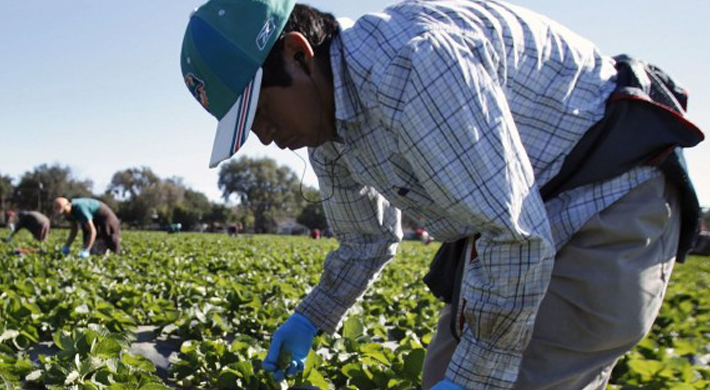
Jason Kenney’s foreign worker reforms should be expanded and enhanced by stronger provincial government commitment to combating abuse. What Kenney presented as an ”œoverhaul” of the Temporary Foreign Worker Program (TFWP), though ambitious, does not address some of the well-documented problems with certain entry streams. Moreover, to limit abuses foreign workers often face, provincial governments need to do more to protect their employment and human rights.
The major reform of the TFWP, a Hydra-like assemblage of entry streams, announced on June 20 is long overdue. The TFWP will now consist of the streams for workers for whom an employer has obtained a positive Labour Market Impact Assessment (LMIA). The new International Mobility Programs (IMP) will include streams for which an LMIA is not required – such as entries under reciprocal employment programs (sometimes called working holidays) and free trade agreements. Employment and Social Development Canada will be the lead department for the TFWP, and Citizenship and Immigration Canada for the IMP (both departments have long been involved in TFWP administration, and the situation was highly confusing). This should improve transparency and accountability.
Not surprisingly, Kenney’s focus and that of the media has mainly been on the changes affecting lower-skilled TFWs. Kenney chose not to extend the recent moratorium on hiring such workers for the food service sector. Instead, he hopes that a range of hiring restrictions will interact with market forces to bring down the overall number of lower-skilled TFWs admitted. He is to be commended for pressing employers to redouble their efforts to hire youth, recent immigrants and Aboriginal people. Let’s hope they do.
The latest reforms go a good deal further — in some cases to facilitate TFW entries. Here the government has singled out three categories: highest-demand occupations (at present limited to skilled trades), highest-paid occupations (those falling in the top 10 percent of what Canadians earn) and shortest-duration occupations (for a stay of 120 days or less). For these three categories, there will be a 10-business-day service standard for the issuance of LMIAs.
However, the government stopped short of addressing some other entry streams that are problematic in certain respects. Prominent among these is the Live-in Caregiver Program (LICP), which – almost unique among the TFWP entry streams − allows participants who work 24 months full-time within four years (or 3,900 hours over a minimum of 22 months) to apply for permanent residence. In their recent IRPP study, Jelena Atanackovic and Ivy Lynn Bourgeault demonstrated how LCP rules can lead to exploitation – for example, caregivers having to work overtime without pay. Some of their interviewees recounted that, despite knowing which government authorities are responsible for enforcing labour standards, they did not file a complaint for fear they could be fired and even deported.
Kenney sees different problems with the LICP. In a June 25, 2014 Globe and Mail article he was quoted as follows: ”œAs best we can tell, a majority of the entrants in that program [are] actually coming to work for relatives.” He added: ”œThe biggest problem I see in it is that … to a great deal, it has mutated into an extended family reunification program.” Kenney indicated that he and Immigration minister Chris Alexander were examining the program and that an announcement is expected later this year. This review should address some of rules that lead to caregivers’ exploitation, notably the closed visas that make it very difficult to transfer to another employer.
Along with his position on the hiring of lower-skilled foreign workers, Kenney’s comments about the LICP underline his focus on abuse of the program before such workers actually begin employment in Canada. He claims that employers, particularly in the fast food industry, have abused the program by hiring large numbers of TFWs. This is not just rhetoric. Of the 12,162 employers who used the TFWP in 2013, 1,123 have a workforce with 50 percent or more TFWs.
To improve the situation of temporary foreign workers during their term of employment in Canada, provincial governments need to bolster the federal overhaul by more proactively enforcing health and labour standards. They have primary responsibility in these domains, not the federal government. Here the record is uneven, as demonstrated by a recent ”œreport card” exercise carried out by the Canadian Council for Refugees (CCR).
Confirming earlier research, the CCR researchers concluded that Manitoba’s 2009 Worker Recruitment and Protection Act set a precedent for the protection of migrant workers and information sharing with the federal government. Manitoba has a Special Investigations Unit which, through complaints and on its own initiative, oversees compliance with employment laws.
Alberta also has legislation that regulates recruiters and prohibits the charging of recruitment fees. However, enforcement of labour standards is solely complaint-driven. The CAR study nevertheless singled out as ”œtrailblazing initiatives” Alberta’s TFW helpline and its TFW advisory offices (which give presentations to employers on their rights and responsibilities).
As for Ontario, which receives the greatest number of TFWs, the report card concluded there is much work to do. On recruitment, Ontario has had some protections for live-in caregivers but not for other temporary workers. Enforcement of employment standards is largely reactive, although there are occasional spot checks of farms employing migrant workers. In December 2013, Ontario introduced legislation to prohibit employers from charging fees for recruitment and withholding personal documents. However, the bill was not adopted before the recent Ontario election.
Some other provinces, such as Saskatchewan and New Brunswick, have taken steps in the past few months to protect foreign workers. But others, including British Columbia, need to step up to the plate. There are sufficient good practices – both legislation and programs – to drawn on in order to help ensure that, however long temporary migrants work in Canada, their rights don’t exist only on paper.







